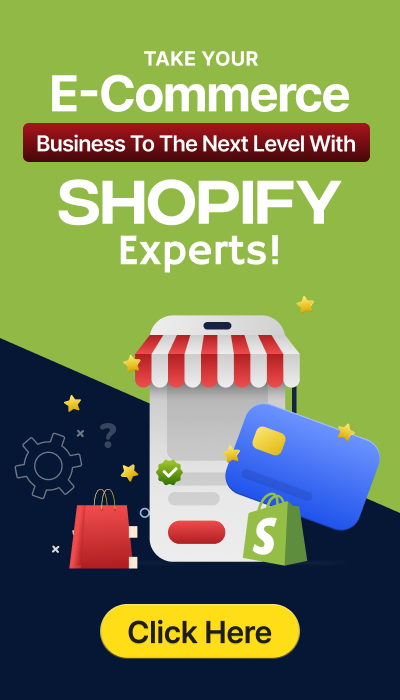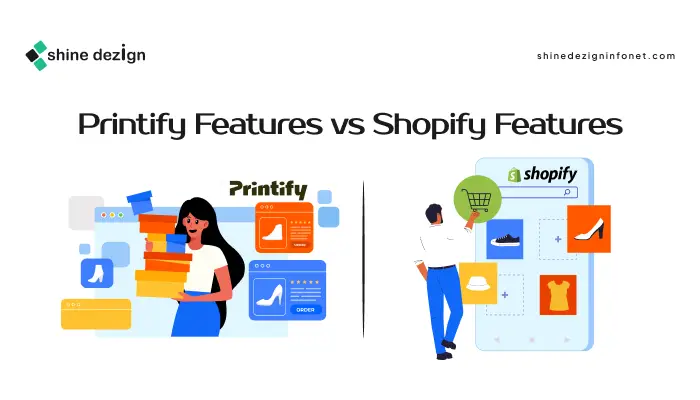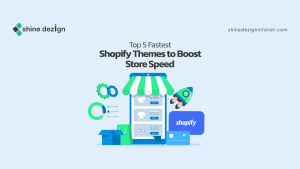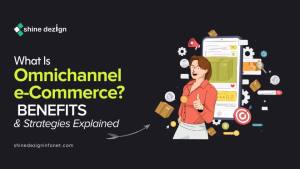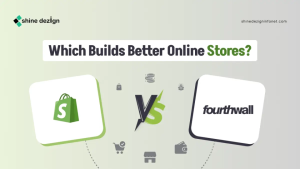Table of Contents
In e-commerce, Printify and Shopify cater to different needs: Printify is a print-on-demand (POD) tool for custom products without inventory, while Shopify is an all-in-one platform for full online stores. Founded in 2015, Printify has 10M+ users and 59M+ orders; Shopify (2006) has generated $1T+ in sales.
This guide compares them to help you choose based on features, pricing, pros/cons, and goals.
What is Printify?
Printify is a print-on-demand (POD) platform that allows users to create and sell custom-designed products (like apparel, accessories, home goods, and more) without handling inventory, production, or shipping.
You design or upload graphics, select products, and connect to an e-commerce store; Printify’s global network of suppliers prints and fulfils orders on demand. It integrates seamlessly with major platforms like Shopify, Etsy, WooCommerce, and eBay, making it easy to set up an online store.
Founded in 2015, it has over 10 million sellers who use it and have fulfilled more than 59 million orders across 209 countries. The platform emphasizes quick setup (no credit card required to get started) and is 100% free to use, offering earnings potential through dropshipping models.
What is Shopify?
Shopify is an all-in-one e-commerce platform that enables businesses of all sizes, from entrepreneurs to large enterprises, to create, manage, and scale online stores. It provides tools for selling products and services online, in physical locations, both locally and globally, directly to consumers, or through wholesale channels.
Key features include customizable store designs (with AI assistance, themes such as Yuva, or custom builds), payment processing, inventory management, marketing tools, and integrations via its App Store.
Founded in 2006, it’s used by millions of merchants who have collectively generated over $1 trillion in sales. The platform emphasizes ease of use, with a quick setup process that allows you to add products, customize the store, and configure payments.
Pros: Printify vs Shopify
Pros of Printify
Printify stands out for its simplicity and accessibility, enabling passive income streams for creators and entrepreneurs. Key advantages include:
- Ease of Entry and Low Risk: No upfront costs for inventory or production, start for free, design products in minutes, and only pay when an order is fulfilled. This makes it ideal for beginners or side hustles, with no minimum orders or storage fees.
- Wide Product Variety and Global Reach: Offers thousands of customizable products from 200+ suppliers, delivered to 209 countries via a fast partner network. Integrates with top e-commerce platforms, expanding sales channels without extra effort.
- Scalability and Automation: Handles fulfilment automatically, allowing focus on marketing and design. High-volume sellers benefit from bulk pricing and tools for managing multiple stores.
- Community and Support: Trusted by millions, with real user stories (e.g., quitting jobs to become digital nomads). Provides design tools, mock-ups, and analytics to optimize products.
Pros of Shopify
Shopify excels in accessibility, performance, and scalability, making it a top choice for many sellers. Based on its features and user data:
- Versatility and Ease of Use: Supports multiple sales channels (online, in-person, mobile, desktop, local/global, direct/wholesale) without needing separate systems. It’s beginner-friendly, with AI-powered design tools and a simple onboarding process.
- High Conversion Rates: Its checkout system converts 15% higher on average than competitors, exposing stores to 150 million “buy-ready” shoppers.
- Speed and Reliability: Delivers stores within 50 milliseconds globally, handling high-traffic events like product drops without downtime.
- Extensive Ecosystem: Over 13,000 apps in the Shopify App Store for specialized features (e.g., marketing, analytics, shipping). Backed by 4,000+ developers ensuring cutting-edge updates. Popular apps like Smart Bundle Discounts App and Advanced PreOrder enhance store functionality and user experience.
- Scalability: Grows with businesses, from small startups to enterprises, with robust infrastructure for global reach.
Printify Cons vs Shopify Cons
Cons of Printify
While user-friendly, Printify has drawbacks related to control, costs, and quality, which can impact long-term success:
- Profit Margins and Hidden Costs: Fulfilment is affordable, but shipping, taxes, and platform fees (e.g., from integrated stores like Shopify) can erode profits. Sellers often need to price high to cover costs, and earnings depend on volume; low sales might not justify the effort.
- Quality and Consistency Issues: Quality varies by supplier, with potential for printing defects, colour mismatches, or delays. No direct control over production means relying on Printify’s vetting, which isn’t foolproof.
- Shipping Delays and Limitations: Global fulfillment is fast but not instantaneous; international shipping can take weeks, which may impact customer satisfaction. Some regions have restricted products or higher fees.
- Dependency on Integrations: While integrations are a strength, issues with connected platforms (e.g., API changes) can disrupt sales. It’s not a standalone store builder like Shopify, so you need another platform for full e-commerce features.
- Competition and Saturation: The POD market is highly competitive, making it challenging to stand out. Intellectual property concerns (e.g., design theft) and algorithm changes on marketplaces can reduce visibility.
Cons of Shopify
While powerful, Shopify has limitations that may not suit every business, particularly those with highly specialized or cost-sensitive needs:
- Costs and Fees: Basic plans are affordable, but transaction fees can add up. Premium apps, themes, and add-ons can increase expenses, potentially making them more expensive than open-source alternatives for long-term use.
- Customization Limits: While flexible, it’s not as open as platforms like WooCommerce (built on WordPress), restricting profound code-level changes for advanced users or unique integrations.
- Vendor Lock-In: Migrating away can be challenging due to proprietary systems, data export limitations, and reliance on Shopify’s ecosystem.
- App Dependency: The platform’s strength in apps can become a weakness if key integrations break or if the App Store lacks niche tools, resulting in workarounds or additional third-party costs.
Pricing: Printify vs Shopify
Printify Pricing
| Plan | Pricings | Best for | Features |
|---|---|---|---|
| Free | $ 0/Month | Beginners can test the platform at no cost. | Up to 5 stores per account. |
| Premium | $24.99/Month | Growing sellers need more stores and advanced tools at a fixed rate. | 1) Up to 10 stores per account. 2) Custom order import. 3) Order management with Printify Connect. 4) Up to 20% discount on all products. 5) Early access to new features. |
| Enterprise | Custom Pricing | Large-scale businesses require unlimited scalability and personalized support. | 1) Unlimited stores per account. 2) Custom order import. 3) Order management with Printify Connect. 4) Custom API integration. 5) Dedicated account manager. 6). Branded customer support. |
Shopify Pricing
| Plan | Pricings | Best For | Features |
|---|---|---|---|
| Basic | $ 29/Month | Solo entrepreneurs are starting. | 1) 10 inventory locations. 2) 24/7 chat support. 3) In-person selling by phone or POS device. |
| Grow | $ 79/Month | Small teams expanding operations. | 1) 10 inventory locations. 2) 24/7 chat support. 3) 5 staff accounts. 4) In-person selling by phone or POS device. |
| Advanced | $ 299/Month | Businesses scaling up. | 1) 10 inventory locations. 2) Enhanced 24/7 chat support. 3) Local storefronts by market. 4).15 staff accounts. 5) In-person selling by phone or POS device. |
| Plus | $ 2300/Month | Complex, high-volume businesses. | 1) 200 inventory locations. 2) Priority 24/7 phone support. 3) Local storefronts by market. 4) Unlimited staff accounts. 5) Fully customizable checkout. 6) Up to 200 POS Pro locations. 7) Sell wholesale/B2B. |
Printify Features vs Shopify Features
Core Purpose and Setup
Shopify: All-in-one e-commerce platform for creating, customizing, and managing online stores. Users can set up stores quickly with themes, AI design tools, and no coding required. Supports selling products, services, or digital goods.
Printify: POD platform for designing and selling custom products (e.g., apparel, mugs) without inventory. Users upload designs, select products, and connect to existing stores; Printify handles printing and shipping on demand.
Store Creation and Customization
Shopify: Offers thousands of themes (free and paid), AI-powered design assistance, and full customization via code or apps. Supports unlimited products, multiple sales channels (online, in-store, social media), and advanced features like abandoned cart recovery.
Printify: Provides a product creator tool for designing items with mockups and previews. Unlimited designs, but customization is product-focused (e.g., colors, sizes). Not a standalone store builder, it requires integration with platforms like Shopify for a full e-commerce setup.
Inventory and Fulfillment
Shopify: Users manage their own inventory with tools for tracking, automation, and multi-location support (up to 200 locations in higher plans). Fulfillment can be manual, via apps, or integrated with third-party services.
Printify: No inventory is needed; fulfillment is automated via a global network of over 200 suppliers. Orders are printed and shipped on demand, with tracking and quality control in place. Supports bulk orders but focuses on POD.
Payment and Transactions
Shopify: Built-in payment processing with competitive rates (e.g., 0.6% on the Advanced plan). Supports multiple gateways, currencies, and fraud protection. Transaction fees apply to lower plans.
Printify: No direct payment processing; relies on integrated platforms (e.g., Shopify) for checkout. Sellers earn profits after fulfillment costs, with no upfront fees.
Integrations and Apps
Shopify: Extensive App Store with 13,000+ apps for marketing, analytics, shipping, etc. Integrates with tools like Printify, social media, email, and ERPs.
Printify: Integrates with major e-commerce platforms (Shopify, Etsy, eBay, WooCommerce) and marketplaces. A limited app ecosystem compared to Shopify, but it includes design tools and order management.
Marketing and Sales Tools
Shopify: Robust suite including email marketing, SEO tools, social selling, loyalty programs, and analytics. Supports upselling, discounts, and multi-channel sales.
Printify: Basic tools for product promotion (e.g., mock-ups for social sharing). Relies on connected platforms for advanced marketing; includes analytics for order tracking.
Support and Scalability
Shopify: 24/7 support is available via chat/email/phone (varies by plan), along with a vast community and extensive resources. Scales from small stores to enterprises with unlimited staff and custom features.
Printify: 24/7 merchant support and self-serve help center. Scales well for POD sellers, offering unlimited designs and stores (up to 10 on free/Premium plans), but is best suited for creators rather than full businesses.
Comparison Table: Printify vs Shopify
| Aspect | Printify | Shopify |
|---|---|---|
| Core Purpose | Print-on-demand platform for custom product design and fulfillment (e.g., apparel, mugs) without inventory. | All-in-one e-commerce platform for building, managing, and scaling online stores for any product or service. |
| Ease of Setup | Quick and free; no credit card needed. Design in minutes and integrate with existing stores. | Simple onboarding with AI tools, themes, and no coding required. Set up in minutes. |
| Pricing (Starting) | Free plan ($0/month); Premium at $24.99/month (yearly). Enterprise custom. | Basic at $29/month; Grow at $79/month; Advanced at $299/month; Plus at $2,300/month. |
| Key Features | Unlimited designs, 200+ suppliers, global fulfillment, integrations with Shopify/Etsy/eBay. | Unlimited products, AI design, payment processing, 13,000+ apps, multi-channel sales, and inventory management. |
| Inventory Management | No inventory needed; automated POD fulfillment. | User-managed with multi-location support (up to 200 locations on higher plans). |
| Payment Processing | Relies on integrated platforms; no direct fees are charged, but fulfillment costs apply. | Built-in with rates starting at 0.6% (Advanced plan); transaction fees on lower tiers. |
| Integrations | Strong with e-commerce platforms; limited apps. | Extensive App Store; integrates with Printify, ERPs, social media, etc. |
| Marketing Tools | Basic promotion tools (mock-ups, analytics); relies on connected platforms. | Robust suite: email, SEO, social selling, loyalty programs, analytics. |
| Support | 24/7 merchant support, self-serve help center. | 24/7 chat/email/phone (varies by plan), as well as community resources. |
| Scalability | Great for POD sellers; up to 10 stores on Premium, unlimited on Enterprise. | Scales from startups to enterprises; unlimited staff on higher plans. |
| Pros | Low risk, no upfront costs, wide product variety, global reach, and automation. | Versatile, high conversion rates, fast performance, extensive ecosystem, scalability. |
| Cons | Profit margins can be low, quality varies, and it is dependent on integrations and shipping delays. | Costs add up, customization limits, vendor lock-in, and app dependency. |
| Best For | Beginners, creators, and side hustlers focused on custom POD products. | Full e-commerce businesses, entrepreneurs, and teams require comprehensive store management solutions. |
| Target Users | Over 10 million POD sellers and passive income seekers. | Millions of merchants, from solo owners to large enterprises. |
What to Choose and Why: Printify vs Shopify
Choose Printify if: you are a beginner testing POD with no upfront costs, ideal for custom products, passive income, and quick scaling via integrations. Why? Low risk, global fulfillment, and automation save time.
Choose Shopify if: you need a complete store with payments, marketing, and multi-channel sales, ideal for diverse products or scaling enterprises. Why? High conversions (15% above competitors), extensive apps, and reliability.
Choose Both: Integrate Printify with Shopify for POD across your entire store. Why? Combines control with effortless fulfillment for hybrid businesses.
Conclusion
Printify and Shopify serve distinct yet complementary roles in e-commerce. Printify excels at effortless print-on-demand with minimal risk, making it a go-to choice for creators and beginners. Meanwhile, Shopify offers a robust, scalable platform for comprehensive online store management.
By comparing their features, pricing, and pros/cons, it’s clear that your choice hinges on whether you prioritize POD simplicity or complete e-commerce versatility. Many users benefit from integrating both, leveraging Shopify’s ecosystem for sales and Printify for custom fulfillment.
